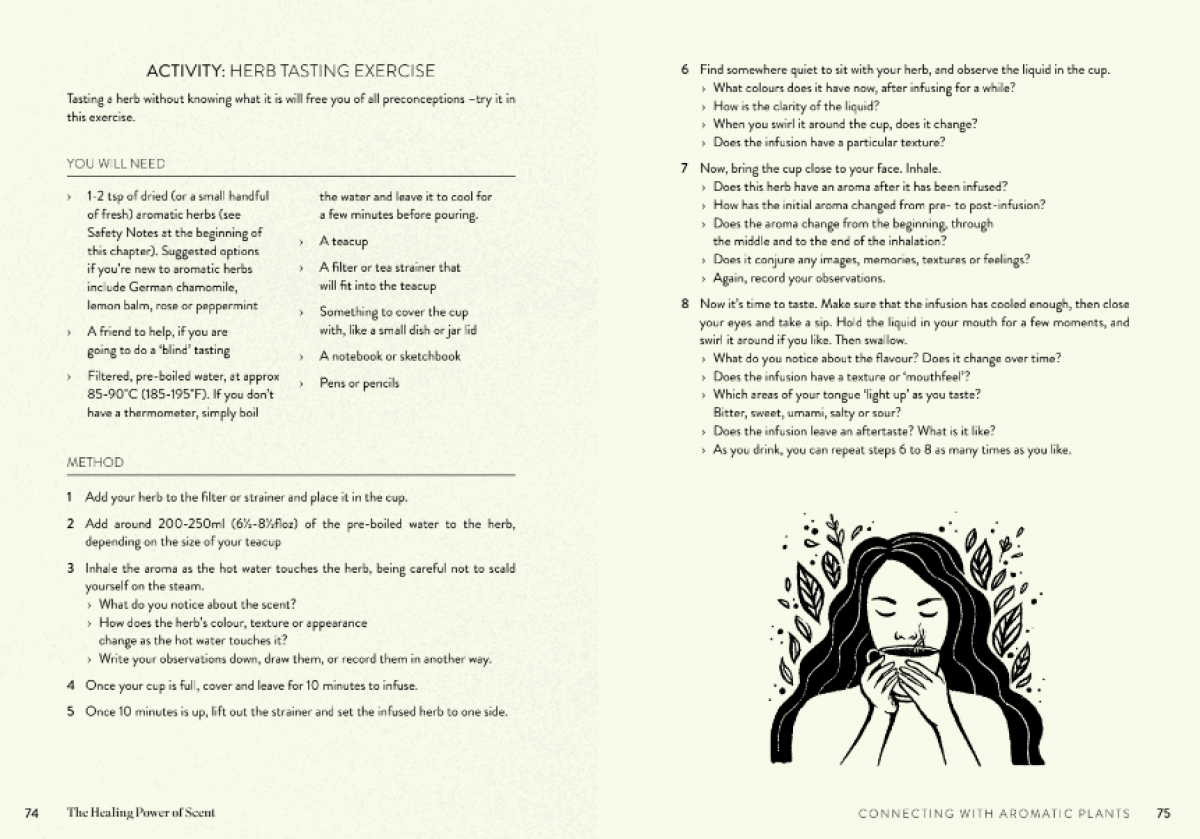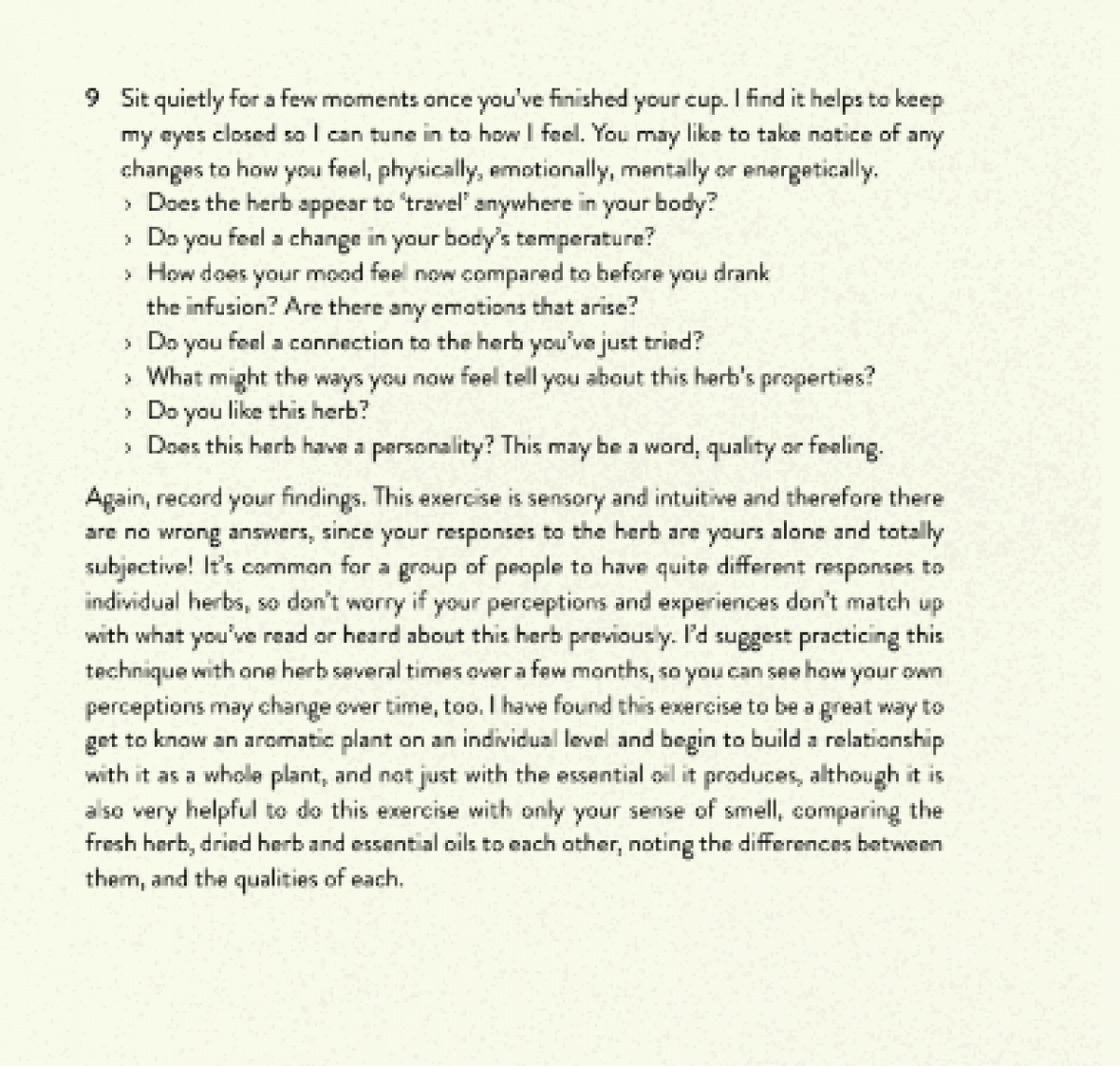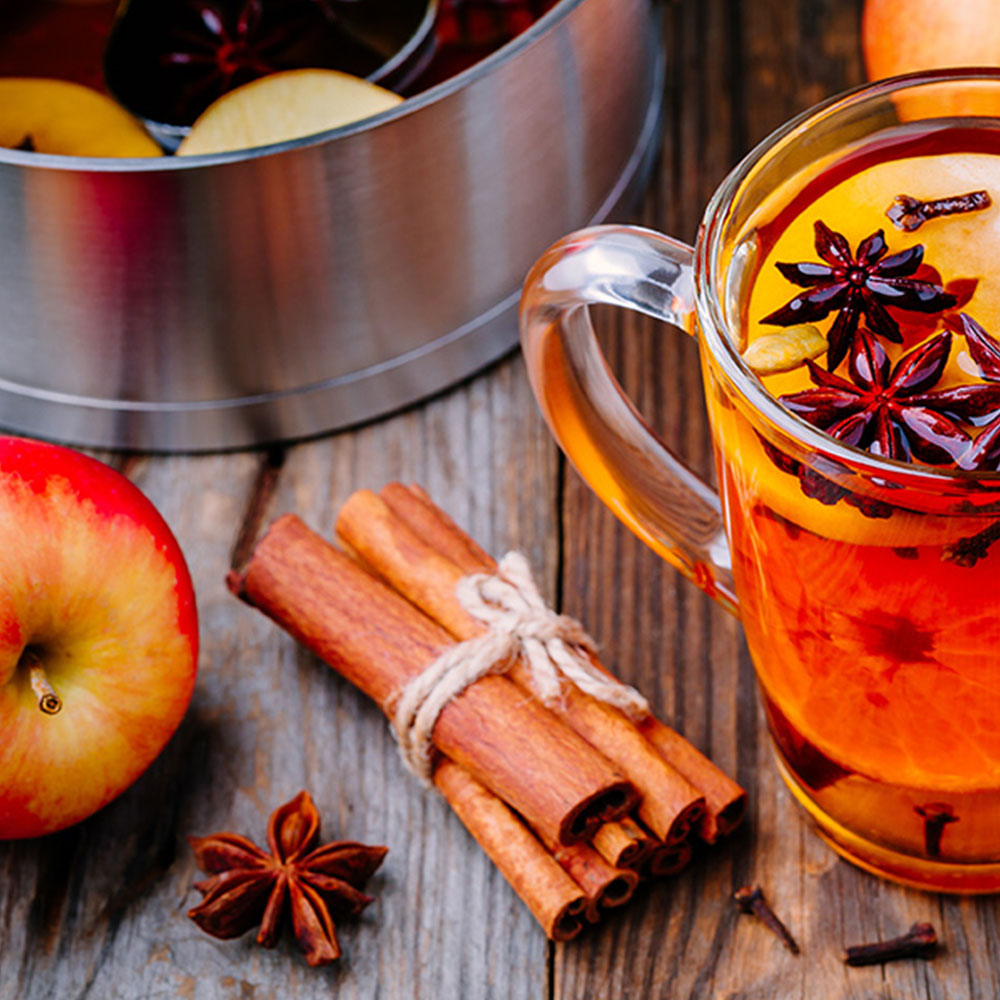20 May 2024
A Herb Tasting Exercise from Aromatherapist Ellen Rowland
Tasting a herb without knowing what it is will free you of all preconceptions – try it in this exercise.

Last week on our blog we talked to Ellen Rowland about her forthcoming book, The Healing Power of Scent. The delightful activity below is an extract from the book and worth taking a moment out of your day to enjoy...
ACTIVITY: HERB TASTING EXERCISE
 Tasting a herb without knowing what it is will free you of all preconceptions – try it in this exercise.
Tasting a herb without knowing what it is will free you of all preconceptions – try it in this exercise.
YOU WILL NEED
- 1-2 tsp of dried (or a small handful of fresh) aromatic herbs. Suggested options if you’re new to aromatic herbs include German chamomile, lemon balm, rose or peppermint
- A friend to help, if you are going to do a ‘blind’ tasting
- Filtered, pre-boiled water, at approx 85-90˚C (185-195˚F). If you don’t have a thermometer, simply boil the water and leave it to cool for a few minutes before pouring.
- A teacup
- A filter or tea strainer that will fit into the teacup
- Something to cover the cup with, like a small dish or jar lid
- A notebook or sketchbook
- Pens or pencils
METHOD
- Add your herb to the filter or strainer and place it in the cup.
- Add around 200-250ml (61/2-81/2floz) of the pre-boiled water to the herb, depending on the size of your teacup
- Inhale the aroma as the hot water touches the herb, being careful not to scald yourself on the steam.
- What do you notice about the scent?
- How does the herb’s colour, texture or appearance change as the hot water touches it
- Write your observations down, draw them, or record them in another way.
- Once your cup is full, cover and leave for 10 minutes to infuse.
- Once 10 minutes is up, lift out the strainer and set the infused herb to one side.
- Find somewhere quiet to sit with your herb, and observe the liquid in the cup.
- What colours does it have now, after infusing for a while?
- How is the clarity of the liquid?
- When you swirl it around the cup, does it change?
- Does the infusion have a particular texture?
- Now, bring the cup close to your face. Inhale.
- Does this herb have an aroma after it has been infused?
- How has the initial aroma changed from pre- to post-infusion?
- Does the aroma change from the beginning, through the middle and to the end of the inhalation?
- Does it conjure any images, memories, textures or feelings?
- Again, record your observations.
- Now it’s time to taste. Make sure that the infusion has cooled enough, then close your eyes and take a sip. Hold the liquid in your mouth for a few moments, and swirl it around if you like. Then swallow.
- What do you notice about the flavour? Does it change over time?
- Does the infusion have a texture or ‘mouthfeel’?
- Which areas of your tongue ‘light up’ as you taste? Bitter, sweet, umami, salty or sour?
- Does the infusion leave an aftertaste? What is it like?
- As you drink, you can repeat steps 6 to 8 as many times as you like.
- Sit quietly for a few moments once you’ve finished your cup. I find it helps to keep my eyes closed so I can tune in to how I feel. You may like to take notice of any changes to how you feel, physically, emotionally, mentally or energetically.
- Does the herb appear to ‘travel’ anywhere in your body?
- Do you feel a change in your body’s temperature?
- How does your mood feel now compared to before you drank the infusion? Are there any emotions that arise?
- Do you feel a connection to the herb you’ve just tried?
- What might the ways you now feel tell you about this herb’s properties?
- Do you like this herb?
- Does this herb have a personality? This may be a word, quality or feeling
- Again, record your findings.
This exercise is sensory and intuitive and therefore there are no wrong answers, since your responses to the herb are yours alone and totally subjective! It’s common for a group of people to have quite different responses to individual herbs, so don’t worry if your perceptions and experiences don’t match up with what you’ve read or heard about this herb previously. I’d suggest practicing this technique with one herb several times over a few months, so you can see how your own perceptions may change over time, too. I have found this exercise to be a great way to get to know an aromatic plant on an individual level and begin to build a relationship with it as a whole plant, and not just with the essential oil it produces, although it is also very helpful to do this exercise with only your sense of smell, comparing the fresh herb, dried herb and essential oils to each other, noting the differences between them, and the qualities of each.
For more information on Ellen's new book, The Healing power of Scent, her launch event in Bristol and her community workshops, please visit her website: https://www.amberluna.co.uk/






